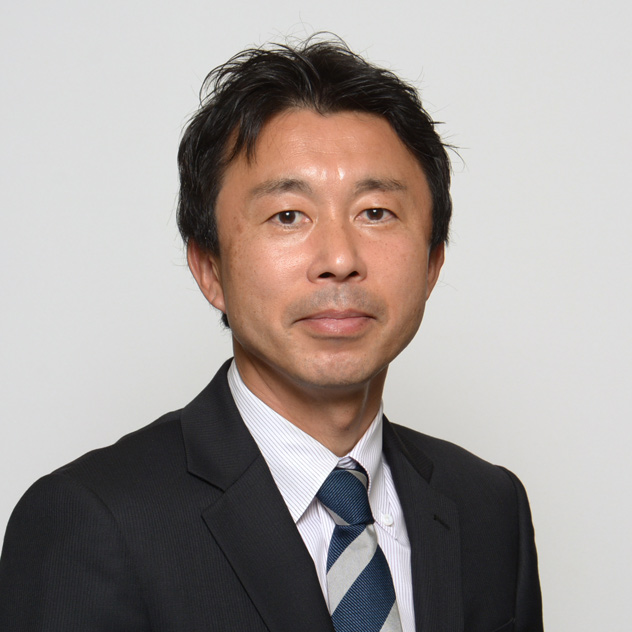Towards a new society brought about by the COVID-19 pandemic: the Turning Point for Decarbonization
Hiroaki Tanaka, Senior Director, Facility Design Group, Engineering Department, NIKKEN SEKKEI LTD
(The positions in this article were current at the time of publication.)
Scroll Down
According to an April 30 announcement by the International Energy Agency (IEA), there is speculation that CO2 emissions in 2020 are set to fall by almost 8% compared to previous years, as economic restrictions from the coronavirus pandemic have reduced the consumption of fossil fuels. During the 2008 global financial crisis caused by the failure of Lehman Brothers Holdings, CO2 emissions fell by 1.3%, which would make this the largest drop ever. I would like to share some of my thoughts on taking our experiences during the coronavirus pandemic as an opportunity to accelerate decarbonization, leveraging the synergistic effects of expanding the use of renewable energy and promoting energy conservation.
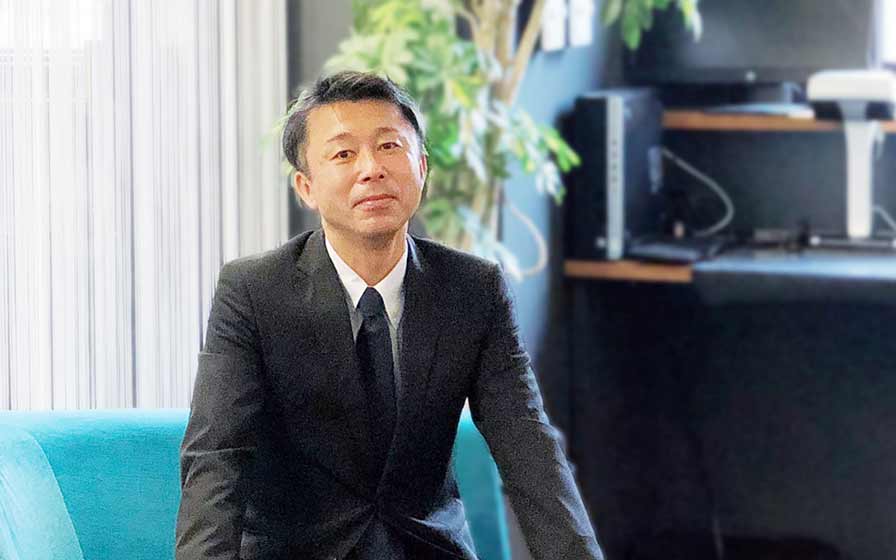 Hiroaki Tanaka, Senior Director, Facility Design Group, Engineering Department, NIKKEN SEKKEI LTD
Hiroaki Tanaka, Senior Director, Facility Design Group, Engineering Department, NIKKEN SEKKEI LTD
(The positions in this article were current at the time of publication.)
Birth of new ideas: natural ventilation and lighting
As we stayed at home and restricted our movements, we experienced firsthand the significance of being in touch with nature. I believe it will become increasingly important for architecture to be built upon the theme of co-existing with nature, taking advantage of a favorable outdoor environment in the so-called “30-minute urban area,” where the air is cleaner and temperatures are milder than in the center of the city. As this grows in importance, the flow of ideas on the use of new and functional renewable energy will start to swell. Today, we are challenging ourselves to create innovative natural ventilation systems for offices that carry in the natural breeze to people who are not located near windows and to partitioned meeting rooms. This will make it possible for the fresh breeze to blow into windowless conference rooms. Of course, these ideas can be applied to buildings in the heart of the city, as well as in those in the suburbs, as long as conditions are suitable.
When climatic conditions are more severe, such as in the mid-summer and mid-winter, it goes without saying that it is important to actively use “open technologies,” such as natural lighting and ventilation, while also skillfully applying “closed technologies,” such as buffer spaces like balconies, solar shading with eaves, and insulation in exterior walls and windows.
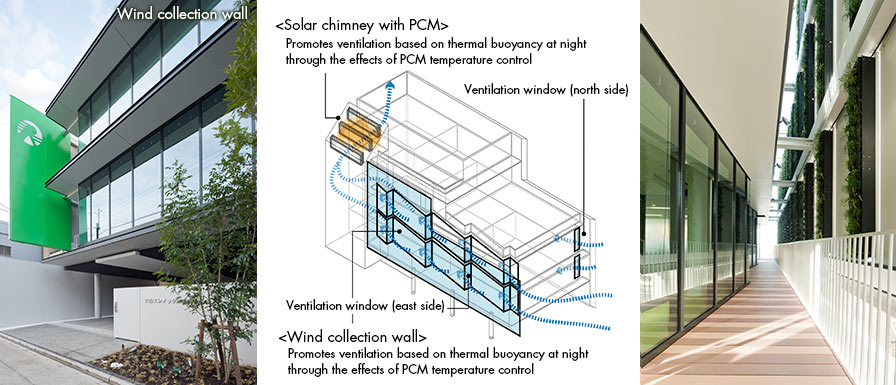 Ideas for wind collection adopted for small offices: Rokugo Elemec's headquarters (2011)
Ideas for wind collection adopted for small offices: Rokugo Elemec's headquarters (2011)
A large air intake plate is used to collect and draw wind into the office. Solar heat at the top of the stairwell propels and promotes natural ventilation.
The increasing importance of controlling energy in time and space
The “Cool, Warm Sofa” was developed as a localized air conditioning system offering comfort to people in just under 10 minutes by enveloping them in cool or warm air seeping out from the sofa. This provides comfort to visitors during the hot summers and cold winters, respectively. The aim of this system is to provide personal comfort using minimal energy, an important idea for future environmental and facility systems that are compelled to respect co-existence with the coronavirus.
In addition, the idea of a “WELL & BCP Table” was devised to provide energy-efficient, comfortable and safe spaces for meetings in an all-in-one table that combines a localized air conditioning system, indoor environmental monitoring and disaster prevention functions. The post-COVID-19 office may be transformed into a valuable space for real communications where people meet up locally. The WELL & BCP Table is expected to support offices as important spaces for workers who have been unable to meet face-to-face, and enable them to spend time talking about innovation
The purpose of localized air conditioning is to avoid wasting energy. Post-COVID-19, it will be more important than ever to limit waste with the use of air conditioning and lighting systems that can flexibly respond to human behavior.
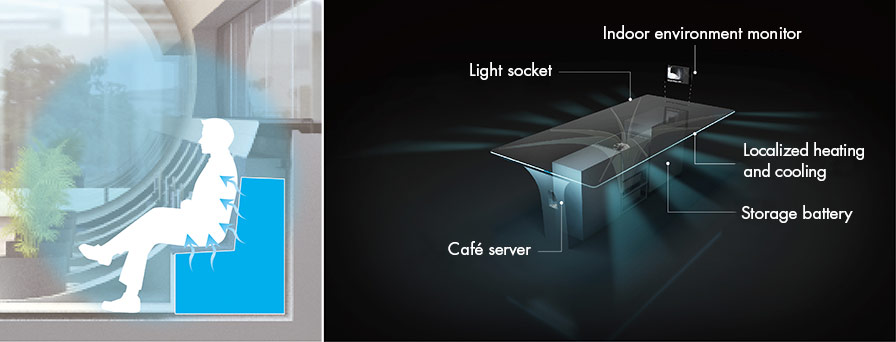 Cool Sofa for any time and any place / WELL & BCP Table
Cool Sofa for any time and any place / WELL & BCP Table
Shifting from “experiencing the environment” to “taking action for the environment”
Just as working from home forces us to think about the ideal office, watching children studying in their home environments and engaging in remote learning reminds us that the reason schools exist is for students to experience them firsthand. The most important part of the program at Mizunamikita Junior High School was the opportunity to experience the environment, which allowed students to perceive energy efficiency with all five senses. We hoped that experiencing the environment at school would raise students’ awareness about conserving energy, which they would then take to their homes and communities, ultimately resulting in energy savings outside the school.
Experiencing the environment will lead to an understanding of the importance of achieving balance with nature and ideas about where energy is consumed, such as in air conditioning and lighting. This type of experience also raises awareness about energy conservation, which will eventually develop into broader environmental action.
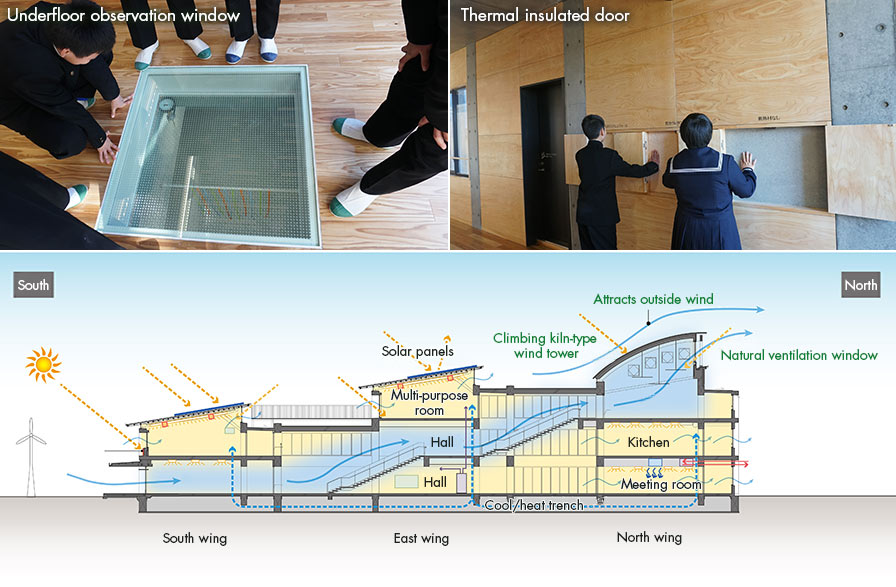 Example of Japan’s first zero-energy school: Mizunamikita Junior High School (2019), creating a healthy and open learning environment using natural wind, light and heat
Example of Japan’s first zero-energy school: Mizunamikita Junior High School (2019), creating a healthy and open learning environment using natural wind, light and heat
Aiming to design zero-energy buildings that can adapt to a changing society
I think we would like Zero-Energy Buildings to incorporate technology from the perspectives of health and infection control in changing conditions, so that users and designers can think about the concept of decarbonization together and enjoy spaces where they can experience an environment that is in balance with nature. At this opportune time to shift our sense of values, we, as architectural and environmental engineers, shall push forward with the task of accelerating the speed of ZEB and ZEH in one stroke.
